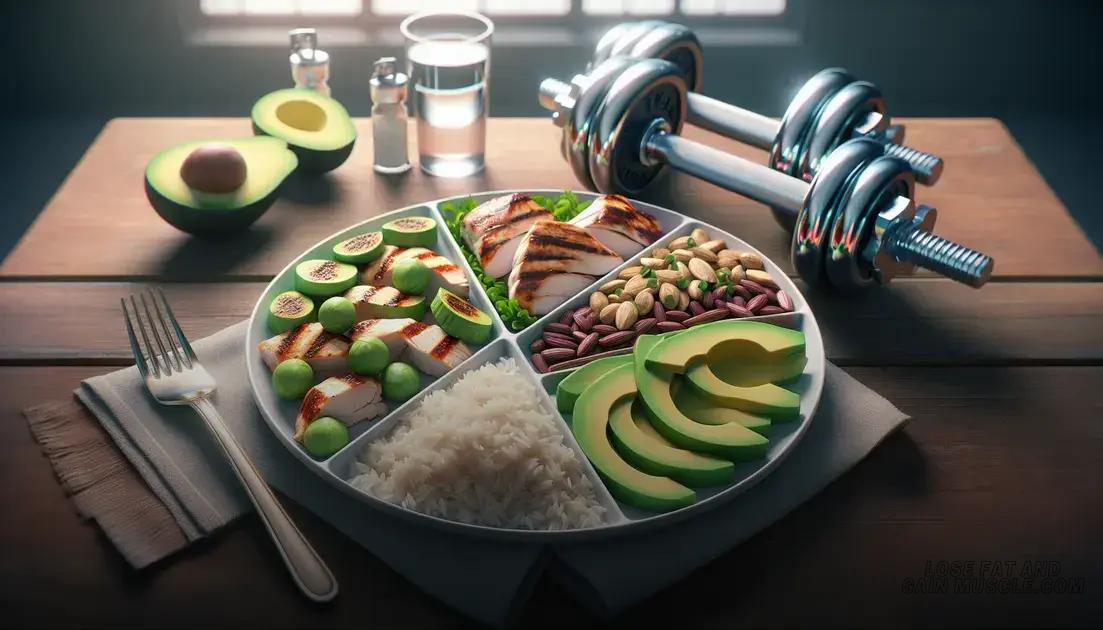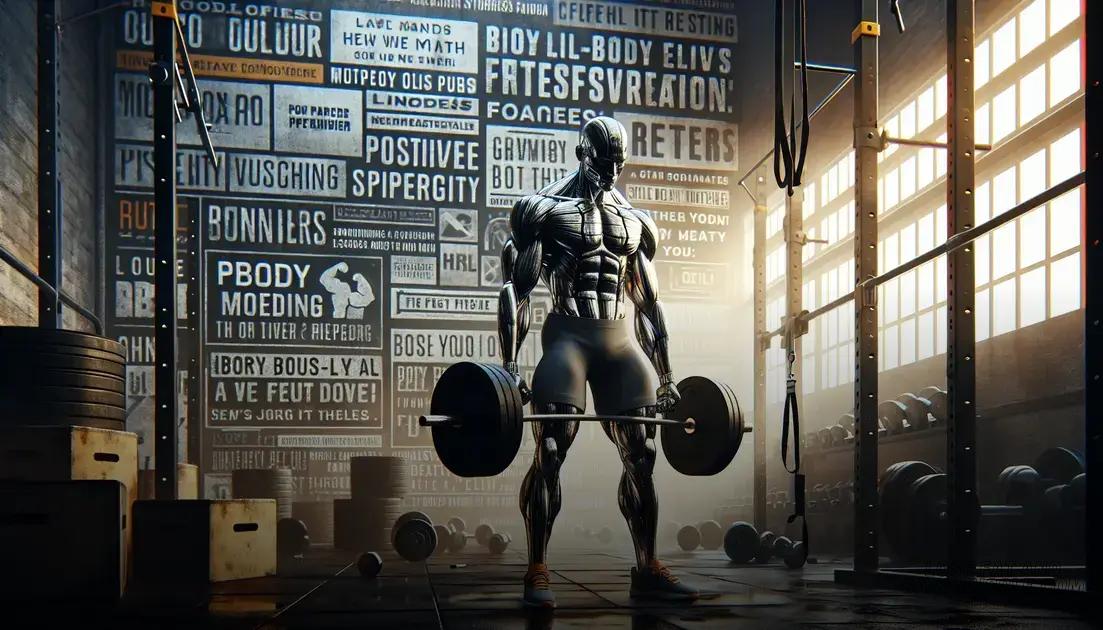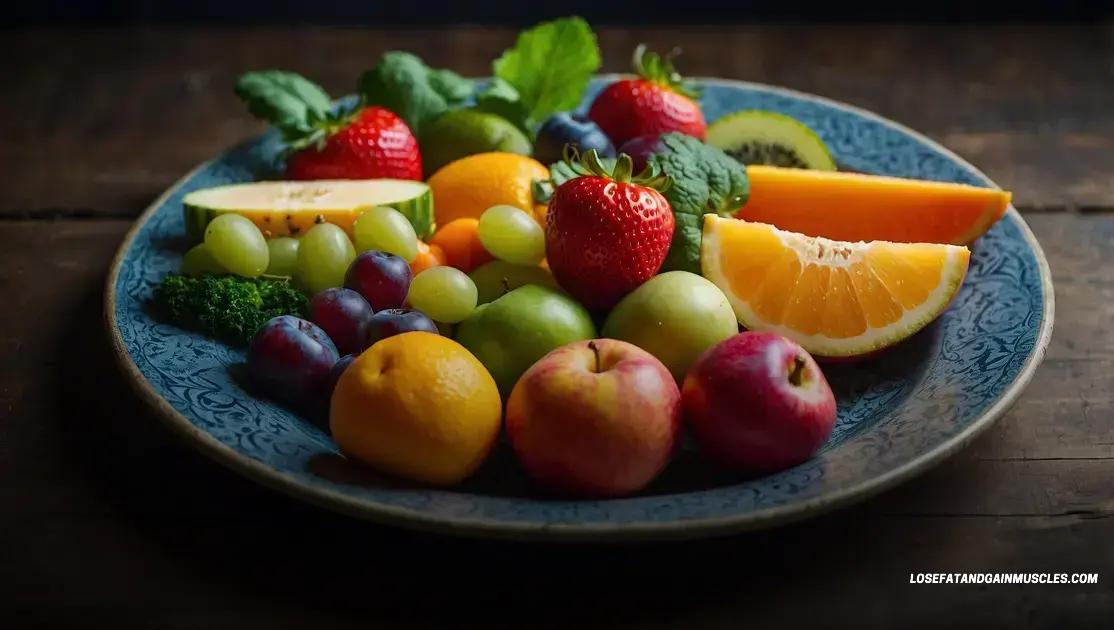Will I Look Fat If I Build Muscle? Uncover the Truth Behind Muscle Gain
Building muscle will not make you look fat; instead, it enhances your overall appearance, boosts confidence, and contributes to a toned physique. Proper nutrition and strength training lead to positive transformations in body composition, making you look healthier and more fit.
Will I look fat if I build muscle? This question haunts many who consider weightlifting and muscle development. While the fear of gaining bulk can be intimidating, understanding how muscle affects your body can offer assurance. In this article, we will dive into the science behind muscle gain, debunk myths, and explore how muscle contributes to your overall appearance. Discover the advantages of building muscle and how it can enhance your body image.
Understanding Muscle Gain and Body Composition
Understanding Muscle Gain and Body Composition is vital for anyone curious about the effects of strength training. When you lift weights, your muscles undergo a process called hypertrophy. This means that the muscle fibers grow larger, resulting in increased strength and mass. However, gaining muscle does not automatically mean that you will look bulky or fat.
What is Body Composition?
Body composition refers to the ratio between fat and muscle in your body. It is important because it determines how you look and how your body functions. Having a healthy balance of muscle and fat is essential for overall health. Increased muscle mass can improve your metabolism, making it easier to manage your weight.
Muscle vs. Fat
One common misconception is that muscle weighs more than fat, but in reality, a pound of muscle and a pound of fat weigh the same. However, muscle is denser than fat, which means it takes up less space in your body. This helps create a leaner, more toned appearance. Therefore, even if you gain weight through muscle, you can actually look slimmer.
How Muscle Gains Affect Appearance
As you build muscle, your body becomes more sculpted. You may notice changes in your shape, such as a smaller waistline and more defined arms and legs. These changes can create a more athletic and confident appearance without adding bulk. Remember, muscle development helps improve your body’s overall aesthetic.
The Importance of Staying Active
Regular exercise, combined with strength training, helps enhance muscle growth while managing body fat. It’s not just about lifting weights; cardiovascular exercises, like running or cycling, are also crucial. These activities promote overall fitness and can help prevent excess fat accumulation.
Listening to Your Body
Everyone’s body responds differently to exercise. If you find yourself worried about looking fat while building muscle, it’s important to remember that a well-rounded fitness routine will contribute positively to your health and body image. Focus on how you feel, rather than just how you look.
Common Myths About Muscle Building

There are many common myths about muscle building that can mislead those looking to improve their fitness. Understanding the facts can help you in your journey. Here are some of the most frequent misconceptions:
1. Lifting Weights Will Make You Bulky
Many people fear that lifting weights will make them look bulky, especially women. This is simply not true. To gain significant muscle mass, one must consume a surplus of calories and engage in specific training routines. For most individuals, lifting weights will help develop a toned and strong physique, not an oversized one.
2. You Need Supplements to Build Muscle
Another myth is that supplements are essential for muscle growth. While some supplements can enhance performance, they are not necessary for building muscle. A balanced diet rich in protein, healthy fats, and carbohydrates can provide all the nutrients your body needs for muscle development.
3. You Should Only Focus on Weight Training
Many people believe that only lifting weights will lead to muscle gain. However, including cardio exercises and flexibility training is crucial too. These activities enhance overall fitness and health, making your strength training more effective.
4. Muscle Soreness Equals Muscle Growth
Feeling sore after your workouts does not mean you have gained muscle. Muscle soreness, known as DOMS (Delayed Onset Muscle Soreness), can happen regardless of muscle growth. It’s a natural response to new or intense training. Focus on consistent workouts to see muscle gains over time.
5. Building Muscle Takes Years
Some believe that changing your body takes years of effort. While significant changes in muscle mass can take time, beginners often see noticeable gains within a few weeks of a proper program. Commitment to training and nutrition can lead to results faster than expected.
6. You Can’t Lose Fat While Gaining Muscle
It is indeed possible to lose fat while building muscle, often referred to as body recomposition. This requires a careful balance of diet and exercise, emphasizing high-protein foods and weight training combined with cardio. Properly managing your calorie intake can lead to fat loss while still gaining strength and muscle size.
How Muscle Affects Your Overall Appearance
How muscle affects your overall appearance is a crucial aspect of understanding body transformation. Building muscle does not only improve strength but also greatly influences how we look. Here are several effects that muscle gain has on appearance:
1. Improved Body Shape
Increasing muscle mass can help shape your body. Stronger muscles can create a more defined waistline and enhance your overall proportions. This means that you can achieve a more athletic look without necessarily losing weight.
2. Increased Tone and Definition
With more muscle, your body will naturally look more toned. This definition comes from the contrast between muscle and fat. As you build muscle, you may notice that your arms, legs, and abdomen become more sculpted, contributing to a healthy appearance.
3. Enhanced Posture
Lifting weights can lead to better posture. Stronger back and core muscles help keep your spine aligned. Good posture can dramatically improve how you carry yourself and, therefore, how others perceive you. Standing tall can make you look more confident and engaged.
4. Boosted Confidence
When you build muscle, you not only feel stronger but also more confident. This newfound confidence often translates into how you present yourself physically. People who feel good about their appearance often exude more positive energy, which can enhance how they are viewed by others.
5. Healthier Skin Appearance
Regular weight training and increased blood circulation can benefit your skin. Exercise is known to promote a healthy glow, helping to eliminate toxins and deliver essential nutrients to your skin. As you build muscle, you may notice an improvement in your complexion and skin tone.
6. Clothing Fit and Style
As you build muscle, your clothing may fit differently. Many people find that they need to size up for shirts and pants due to increased muscle mass, particularly in the shoulders and thighs. This change can lead to a more tailored look, giving a stylish edge to your wardrobe.
The Role of Diet in Muscle Development

The role of diet in muscle development is crucial for anyone aiming to gain muscle effectively. Nutrition helps fuel workouts and supports recovery, making it a key factor. Here’s how diet impacts muscle growth:
1. Importance of Protein
Protein is the building block of muscle. Consuming enough protein helps repair and grow muscle fibers after workouts. Sources include lean meats, dairy, eggs, beans, and nuts. Aim for a protein-rich meal after your training sessions to maximize recovery.
2. Carbohydrates as Fuel
Carbohydrates provide the energy needed for working out. When exercising, your body uses glucose from carbs for fuel. Incorporate healthy carbs like whole grains, fruits, and vegetables to maintain your energy levels during intense workouts.
3. Healthy Fats for Hormone Production
Don’t forget healthy fats! They play a significant role in hormone production, including hormones like testosterone, which helps build muscle. Include sources like avocados, olive oil, and fatty fish in your diet for optimal health.
4. Timing of Meals
Meal timing can influence muscle development. Eating a balanced meal or snack within 30 minutes after exercising can help replenish energy and promote recovery. Aim for meals that feature protein and carbs for the best effect.
5. Hydration Matters
Staying hydrated is essential for muscle development and overall performance. When you are dehydrated, your body doesn’t function well, leading to decreased strength and endurance. Drink plenty of water throughout the day and during workouts to keep your body functioning at its best.
6. Monitoring Caloric Intake
To build muscle, you need to consume more calories than you burn. However, it’s essential to focus on quality calories. Foods rich in nutrients will support your muscle-building efforts more than empty-calorie snacks. Keep track of your intake to ensure you’re getting enough nutrients.
Benefits of Building Muscle for Body Confidence
Benefits of building muscle for body confidence are numerous and essential for personal well-being. Feeling confident in your body can positively impact various aspects of your life. Here are some key benefits:
1. Enhanced Self-Esteem
Building muscle can significantly boost self-esteem. As you see physical changes in your body, you may feel more attractive and strong. This sense of accomplishment can enhance your overall self-image.
2. Improved Body Image
As you gain muscle, you may begin to appreciate your body more. Many people report that as they get stronger, they become more accepting of their physical appearance. A positive body image leads to a healthier mindset.
3. Increased Energy Levels
Muscle building leads to increased energy levels, making daily activities feel less tiring. With more energy, you are likely to engage in social activities, improving your confidence and enjoyment of life.
4. Enhanced Physical Presence
As your muscles grow, so does your physical presence. Many find that stronger muscles contribute to a more commanding posture. This can make you appear more confident and assertive in various situations.
5. Greater Functional Strength
Building muscle increases your functional strength, making everyday tasks easier. Whether lifting groceries or playing with children, you will feel more capable and empowered, which boosts confidence.
6. Positive Mindset
The process of working out and achieving muscle gains fosters a positive mindset. Regular workouts release endorphins, often called “the feel-good hormones.” This improved mental state contributes to increased body confidence.
Real-Life Transformations: Muscle vs. Fat

Real-life transformations: muscle vs. fat highlight the differences between gaining muscle and increasing body fat. Understanding these transformations can motivate individuals on their fitness journeys. Here are some key aspects:
1. Visual Differences
When comparing muscle to fat, muscle is denser and takes up less space in the body. This means that a person can weigh more while appearing slimmer if they have more muscle mass. Real-life examples show individuals with higher muscle percentages looking fit and toned compared to those with more body fat at the same weight.
2. Changes in Body Shape
Building muscle can change your body shape significantly. For example, individuals may notice a more defined waist and sculpted arms as they gain muscle. Many transformations showcase this, showing before and after photos where muscle gain results in a more athletic physique.
3. Weight Changes
Going through a muscle-building journey often leads to shifts in body weight. People may gain weight from muscle development while losing fat. Tracking body composition rather than just weight can reveal positive changes in health and appearance.
4. Overall Health Benefits
Transforming body composition by increasing muscle and decreasing fat leads to better overall health. Individuals report improved stamina, strength, and even mental clarity after undergoing muscle-building transformations. These physical benefits contribute to a better quality of life.
5. Real-Life Stories
Many people share their journeys on social media, detailing their progress from fat loss to muscle gain. These stories often inspire others by emphasizing that visible transformations take time and dedication. Success stories can provide encouragement to those starting their fitness journey.
6. The Role of Commitment
Consistency in workouts and nutrition is vital for transformations. Those who commit to a structured strength training program and a balanced diet tend to see impressive changes over time. Real-life transformations highlight that dedication pays off, leading to visible results.
Understanding the Impact of Muscle Gain on Body Image
Building muscle has a profound effect on both physical appearance and overall confidence. It is essential to understand that with dedication and the right approach, you can transform your body without simply looking bulky.
By learning about the role of diet, exercise, and proper training techniques, you can take control of your fitness journey. Embracing the facts about how muscle affects appearance helps dispel myths and encourages a healthier body image.
Real-life transformations demonstrate that the journey towards building muscle is achievable and rewarding. The improvements in self-esteem, body image, and overall health are motivating reasons to commit to your fitness goals.
In conclusion, don’t hesitate to pursue muscle gain as a means to enhance your body confidence and overall well-being. Remember, the journey is personal, and each step you take leads to a stronger, healthier you.
FAQ – Frequently Asked Questions About Muscle Gain and Body Image
Will building muscle make me look bulky?
Not necessarily. Gaining muscle can improve your shape and tone without adding bulk, especially if you focus on a balanced workout routine.
What role does diet play in building muscle?
Diet is crucial for muscle development. Consuming enough protein, healthy fats, and carbohydrates supports workouts and aids recovery.
Can I gain muscle and lose fat at the same time?
Yes, it’s possible to lose fat while building muscle through a balanced approach of strength training and proper nutrition.
How long does it take to see results from muscle training?
Results can vary, but many people start seeing noticeable changes within a few weeks of consistent training and proper nutrition.
What are the mental benefits of building muscle?
Building muscle can enhance self-esteem, improve body image, and increase overall confidence, leading to a more positive mindset.
Are there risks associated with gaining muscle?
As long as you follow a safe and structured program, the benefits usually outweigh the risks. It’s important to listen to your body and avoid overtraining.













